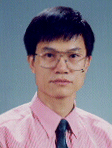| main paper |
Dong-Guk Paeng, Kweon-Ho Nam, Min Joo Choi and K. Kirk Shung (2009). Three-Dimensional Reconstruction of the "Bright Ring" Echogenicity from Porcine Blood Upstream in a Stenosed Tube. IEEE Transactions on Ultrasonics, Ferroelectrics, and Frequency Control, 56(4), 880-885.
Kweon-Ho Nam, Dong-Guk Paeng, and Min Joo Choi. (2009). Ultrasonic Backscatter from Rat Blood in Aggregating Media under In Vitro Rotational Flow. IEEE Transactions on Ultrasonics, Ferroelectrics, and Frequency Control, 56(2), 270-279.
Kang ll LEE and Min Joo CHOI. (2009). Prediction and Measurement of the Size of Thermal Lesion induced by High Intensity Focused Ultrasound in a Tissue-Mimicking Phantom. Japanese Journal of Applied Physics, 48, 027003.
Lee K I and Choi M J (2008). Dependence of the phase velocity on the structural properties in trabecular bone. Journal of the Korean Physical Society, Vol. 53, No. 2, August 2008, pp. 601-606.
Young-sun Kim, Hyunchul Rhim, Min Joo Choi, Hyo Keun Lim and Dongil Choi. (2008). High-Intensity Focused Ultrasound Therapy: an Overview for Radiologists. Kor. J. Radiol., 9(4), 291-302.
M J CHOI, S C CHO, G S KANG, D G PAENG, K I LEE, M HODNETT & B ZEQIRI, A J COLEMAN. (2008). QUANTIFICATION OF ACOUSTIC CAVITATION PRODUCED BY A CLINICAL EXTRACORPOREAL SHOCK WAVE THERAPY SYSTEM. Modern Physics Letters B, 22(11), 809-814.
KANG IL LEE, IMBO SIM, GWAN SUK KANG, MIN JOO CHOI. (2008). Numerical simulation of temperature elevation in soft tissue by high intensity focused ultrasound. Modern Physics Letters B, 22(11), 803-807.
KWON-HO NAM, DONG-GUK PAENG, MIN JOO CHO AND K. KIRK SHUNG (2008). ULTRASONIC OBSERVATION OF BLOOD DISTURBANCE IN A STENOSED TUBE: EFFECTS OF FLOW ACCELERATION AND TURBULENCE AT DOWNSTREAM. Ultrasound in Medicine & Biology, 34(1), 114-122.
Lee K I and Choi M J (2007). Variations of phase velocity and attenuation coefficient with porosity in Polyacetal cuboid bone-mimicking phantoms. Journal of Acoustical Society of America, 121(6), 263-269.
Hodnett M, Choi M J and B Zeqiri. (2007). Towards a reference ultrasonic cavitation vessel. Part 1: preliminary investigation of the acoustic field distribution in a 25 kHz cylindrical cell. Ultrasonics Sonochmistry, 14, 29-40.
Kang ll Lee, Elinor R. Hughes, Victor F. Humphrey, Timothy G. Leighton and Min Joo Choi (2007). Empirical angle-dependent Biot and MBA models for acoustic anisotropy in cancellous bone. Physics in Medicine Biology, 52, 59-73.
Dong-Guk Paeng, Hyung Ham Kim, Sang-Goo Lee, Sung Min Rhim and Min Joo Choi. (2006). Fabrication of a 40 MHz Single Element Ultrasonic Transducer Using PMN-PT Single Crystals. Key Engineering Materials, 321-323, 978-983.
Ying Li, S.R.Anjaneya Reddy Guntur, Min Joo Choi, Dong-Guk Paeng (2006). AN AUTOMATED MEASUREMENT SYSTEM OF ULTRASONIC BACKSCATTER OF TOFU AND MUK. Key Engineering Materials, 321-323, 1074-1077.
Mok Geun Jeong, Min Joo Choi, Sung Jae Kwon, Moo Ho Bae, Bajarm Zeqiri, Louise Wright and Andrew Coleman (2006). Ultrasonic characterization on thermal distribution in vicinity of a cylindrical thermal legion in a biological tissue. Key Engineering Materials, 321-323, 1133-1138.
Min Joo Choi, Gwan Suk Kang, Dong Guk Paeng, Sung Min Rhim, Bajarm Zeqiri and Andrew Coleman (2006). Characterization on the harmonics in the diagnostic ultrasound echoed from the focal region of high intensity focused ultrasound. Key Engineering Materials, 321-323, 1123-1128.
Byoung-Hyun Min, Jeong-Im Woo, Hong-Sik Cho, Byung Hyung Choi, Soo-Jeong Park, Min Joo Choi, So Ra Park. (2006). Effects of low-intensity ultrasound (LIUS) stimulation on human cartilage explants. Scandinavian Journal of Rheumatology, 35(4), 305-311.
Choi M J, Doh D H, Hwang T G, Cho C H, Paeng D G, Rim G H and Coleman A J. (2006). Acoustic streaming produced by a lithotripsy pulse: preliminary observation using a partical image velocimetry method. Ultrasonics, 44(2), 133-145.
Park S R, Jang K W, Park S-H, Cho H S, Jin C Z, Choi M J, Yu S L and Min B H (2005). The effect of sonification on steoarthritis. Part 1: effects of ultrasound on uptake of hyaluronate into the rabbit synovium. Ultrasound in Medicine & Biology, 31(11), 1551-1558.
Park S R, Park S-H, Jang K W, Cho H S, Cui J H, An H J, Choi M J, Chung S I and Min B H (2005). The effect of sonification on steoarthritis. Part 2: Alleviation of teoarthriti pathogenesis by ultrasound with simultaneous hyaluronate injection. Ultrasound in Medicine & Biology, 31(11), 1559-1566. |













 예비대학생
예비대학생 재학생
재학생 졸업생
졸업생 일반인
일반인 교직원
교직원